Forzing is one of the first blooming plants that begins to delight us even early in spring with its bright yellow flowers. They bloom on bare branches, and only at the end of flowering the shrub is covered with foliage. Our article will tell about landing and leaving forvization in the open ground.
Brief description of Forzition
Forzing, often called foresaith, is a shrub or a small village from the Maslin family. Such a plant was cultivated. It was a long time ago and his name received in honor of the Scottish botany William Forsight.
The height of the plant varies within 1-3 m, the branches and the trunk are covered with brown bark, and blooms shrubs with bell-colored bright yellow canary buttons.
The blooming forzing pleases the eye for quite a long time, up to 3 weeks, but if you grow it in extremely comfortable conditions, then you can extend the flowering to the month. A distinctive feature and the main advantage of the culture is that it blooms one of the first, often immediately after the snow. Forzition is often used in landscape design, since its beauty is manifested not only in spring, but also in the fall in the form of decorative foliage of purple shade. Well, since the shrub himself has a dense and thick crown, there are often live hedges from it.
Types and popular fortification varieties
- Perhaps most often in our country can be found forvization of the European - middle growth shrub, reaching 2 m in height and having direct branches. Butons on its branches are located one by one, have a bright gold shade bells.
- Forzing Girald with appearance very much resembles its own relative described, but it is better adapted to the cold. Up to 2 m is growing into height, but its upright stalks have a tetrahed form, covered with yellowish brown bows. The foliage resembles an ellipse, reaches 10 cm, painted into dark green. The buds of this variety are large, yellow, and the petals are slightly twisted.
- Forzing the dynamic, it is a hanging - a high shrub, often growing up to 3 m. Crown lush, stretched, branches are curved down, have a tetrahed form and a small thickness. The bark is painted in the reddish, sometimes olive shade. Yellow flowers of this formation reaches 2.5 cm in diameter and are located groups. There are several varieties of this species that are most popular in our latitudes. Forzing Pepper is different not only with bright colors, but also yellowish motley foliage. Forzing Thongs blooms with a dark yellow shade buton. A distinctive feature of Purpournostellite is the reddish branches and the same leaves.
- Forzing Dark green - a tall shrub size up to 3 m. The branch of it is a reprehension, green. The oblong foliage covers the shoots sufficiently thick, has a rich green shade, in length reaches 15 cm and has gear edges. The bloom in this forsy is yellow, but also with a greenish tinge. Buds are located groups. A distinctive feature of the culture is good drought resistance.
- Forzing Intermediate is a hybrid variety, the result of cropping downstairs and dark green crops. This is a high three-meter shrub with oblong 10-centimeter leaves. The foliage has a dark green tint and remains such until late autumn. Culture blooms 4 years after landing, the period of the bouton formation falls for April or May. Its distinctive features are the ability to rapid growth, good tolerance of frost and drought. Among the famous varieties can be distinguished by Beatrix Parandand - a high bush with 4-meter branches, flowers with rich-yellow buds with dark stripes at the base. The dance shrub denziflora also belongs to this view. It grows 1.5 m in height, has light yellow flowers with twisted petals, poorly tolerates freezing. Low, up to 1 m in height, but very empty is the variety spectabilis. It is beautiful in the spring when it blooms with large boutons of 4.5 cm in diameter, and in the fall, when its foliage is turning into purple, and then in bright yellow. Forzing Lingwood Gold reaches 3 m in height. It is not bad to carry frost and resistant to the tanned air, which is why it can often be found in urban parks.
- Busty Beanzia White grows 2 m in height. The stalks are covered with oval leaves of 8 cm long, in the summer, their lower side is painted in purple color. White buds around the edges, in the storm yellowish.
- Forzing egg-shaped - the plant is relatively low, 1.5-2 m in height, has an empty lush crown consisting of a branch of a grayish yellow shade. The foliage of the oval long shape, the summer is green, the autumn becomes purple. Buds are saturated yellow, about 2 cm in diameter. This type of culture is the most early-minded, besides, it is well tolerated and frost and drought. A common variety is Spring Glory, Tetragold, Goldzauber.
Forzition, photos
Forzition: landing and care
Several useful recommendations
Spring Forzing becomes a real decoration of parks, squares and private household plots. Her nice feature is undesaked and easy to care. So that the shrub bloom and pleased the eye, it is necessary to observe simple rules:
- The plant loves the light, but it is not bad to carry a small shadension.
- Forzing is better to plant in a limestone soil.
- A bright yellow shade of her colors looks at the background of dark green plants, for example, coniferous trees and shrubs.
Landing Forzition
Put forsias to the ground in spring or at the beginning of autumn, there are still no frosts at night. So the likelihood is that culture will come true in a new place before the start of cold weather. Since the plant loves the sun, then the site should be chosen enough for it. However, you can put a bust of forsia and in a small shadow. The acid land on the plot before planting a culture is worth liming with the help of wood ash.
This is how the forsia is planted on the site:
- Drop the 50x50x60 pit on the landing place on the landing place. If the bushes are somewhat, deepends at a distance of about 150 cm from each other.
- Be sure to make a drain layer. For this purpose they take crushed stone or brick brick. They are sprinkled into pits by 15-20 cm, covered with a layer of sand at 10 cm.
- Then prepare the nutrient soil from 2 parts of the garden land, 1 part of the sand and 1 part of the peat, add 200 g of ash.
- Immerse the roots of seedlings in the recess and sprinkle soil. Seal, pour clean water.
- If you are landing in spring time, then you will later remain only time to water seedlings. If the procedure occurs in the fall, then the near-the-cornery zone must be muljal in obligatory. Mulch the soil with air-permeable material, so that the soil can breathe and the kidneys on the plant in warm weather did not break.
Force care
Shrub care rules Simple:
- Adults who arrived in the summer can not even watered if the weather is rain enough. If summer is arid, then 1-2 times a month, the bushes are advisable to give extra water. For such iristers, approximately 10 liters of water per plant are used.
- When water is absorbed and the ground will dry on top, it must be exploded, giving roots access to oxygen. Lock the earth deeply, full length of the bayonet shovel. In the process, at the same time, weeds are torn.
- Then the soil of the barrel is mounted using compost or dry ground.
- Forzing should be periodically fertilized to get beautiful bloom. Feed it three times per season. The first time it is done at the beginning of spring - around the trunk lay a layer of reworked manure, and then it is prettier wetting it with water. Dung in this case will play a role not only nutrition, but also mulch. In the middle of spring, the land near the bush is drunk and added mineral fertilizer. On 1 m² it needs 70 when the culture will flash and new flower kidneys will be formed in shoots, it is necessary to feed it by "Kemira Wagon", which will take about 120 years old on 1 m²
- Winter plant care is also important. Late in the fall, the priority circle of forsias should be mulched with dry foliage, approximately the 10-centimeter layer. Then the branches must be burned to the ground and fix in that position. To protect the shrub from the cold weather, it should be covered with a sweetheart. In the spring, all this is cleaned and the branches will be discharged from the ground. If the winter is given to a snowy, then in the shelter of the forsius will not be necessary, mature bushes perfectly fall under the snow cap.
The reproduction of Forzition
Force is more convenient and easiest to multiply with cuttings:
- For the procedure, 50 cm shoots are taken, cut them off as possible in June.
- The lower leaves are broken from the cuttings, the branches are immersed in a solution of epine or corneeling, or another root formation stimulator. Then they are transferred to the film and sit in the sand either perlite.
- Silent is amenable to autumn shoots with a weird bark. They are cut in October, and sit right in garden soil. On top of the ground leave 2-3 kidneys. To protect the shoots from the winter cold, they are covered with dry foliage. All winter they are coming out in this form, and in the spring, when the foliage is cleaned, actively go into growth and already by the next autumn become strong seedlings.
The second method of breeding forssee is the formation of messengers. Here is what this procedure looks like:
- In the summer, a strong young escape is chosen on the shrub, located below everything.
- It is pulled by wire near the base, bend to the ground. Cora on the part that comes into contact with the soil, cut a little.
- Escape is fixed and falling asleep with a feeble soil. After time, the roots should appear in the place of the door.
- In the spring, the seedlove is ready, it only needs to be cut off from the mother's bush and move it to a designed place.
Trimming Forzition
Young and recently transplanted plants are not covered strongly, they only spend the sanitary procedure, that is, it is cut off all that it died out, dry or broke. As for adult bushes, each spring with them is removed by the frozen tips of the branches, and in the summer, after biting, buds are engaged in the main trimming. In the process of it, shoots are cut half, and those that dried, cut up at an altitude of 5 cm from the ground. With the help of forming pruning can create the shape of the bush, to adjust the thickness of the crown.
There is still a rejuvenating trimming, stimulating the growth of new branches. When they spend such a trimming, all branches are cut at an altitude of 5-6 cm from the soil. It is not necessary to carry out the rejuvenating procedure, otherwise the forsius may stop blossoming at all, even the crown will be empty and wide. The optimal frequency of culture rejuvenation is once every 4 years.
How to deal with pests and diseases of Forzition
Forzition can be attributed to those plants that are very resistant to diseases and pests. But sometimes she can become a victim of wilting, moniliosis or bacteriosis. It is possible to deal with such misfortunes:
- To save a shrub from fading, it is necessary to be treated with a 2-percent solution of Fundazola.
- If the culture struck bacteriosis, unfortunately, it will have to dig all the plant entirely, including the roots, and then dispose of.
- Monylize can be recognized by foliage - they are covered by brown stains. If you notice this, cut all the affected areas and clean it, until you reach a healthy fabric.
- Sometimes the forsius affect nematodes. In this case, it is necessary to carry out the processing of the soil of the carbation.


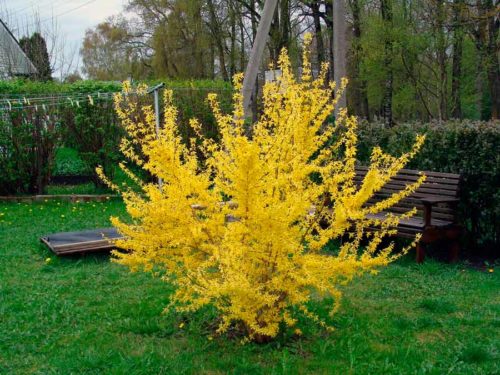
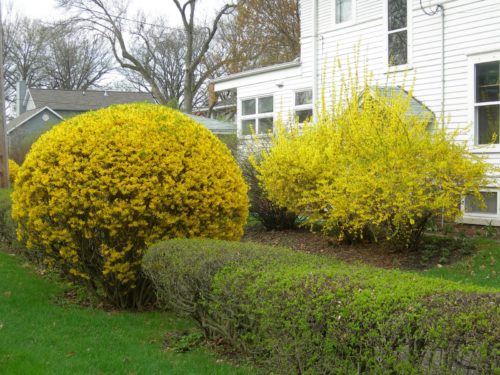
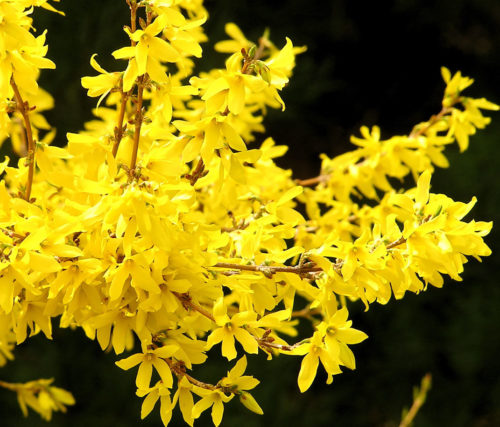

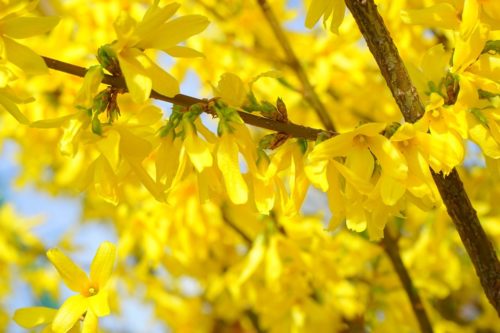

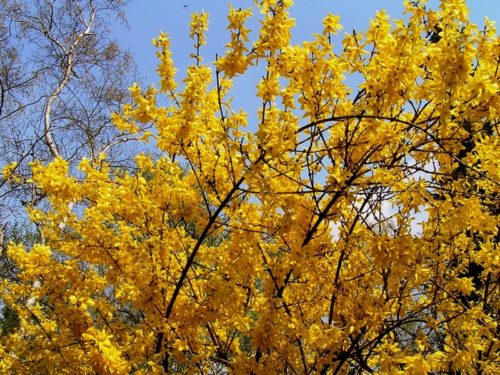
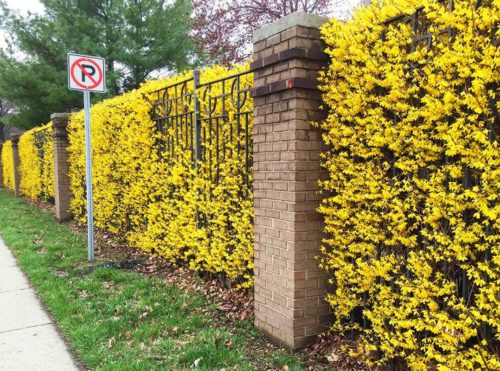
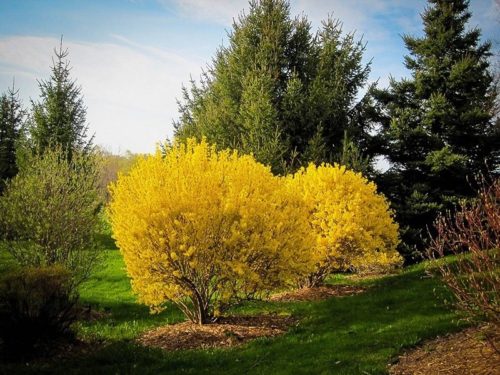

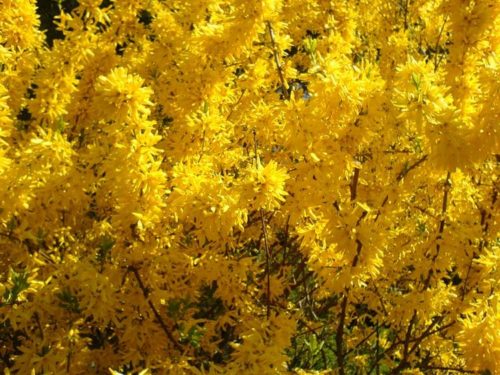
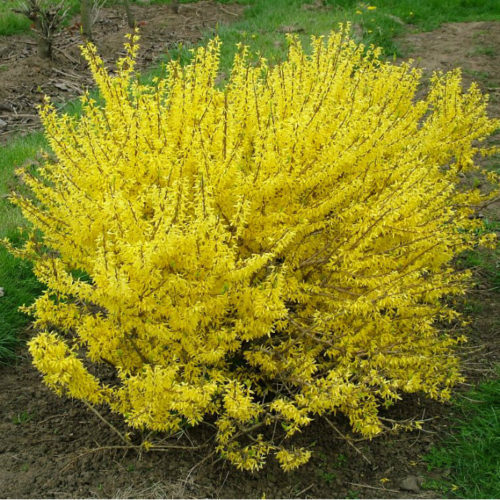
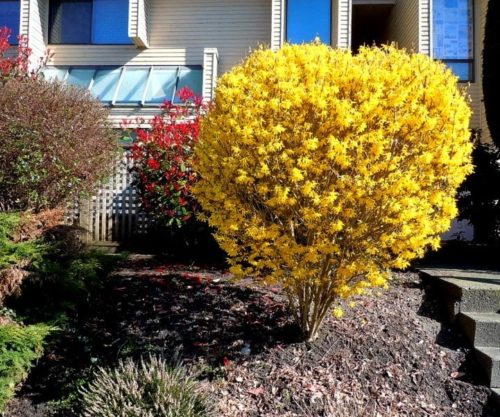
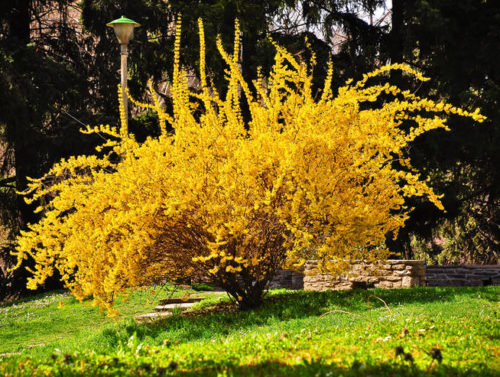












 Start a discussion ...
Start a discussion ...